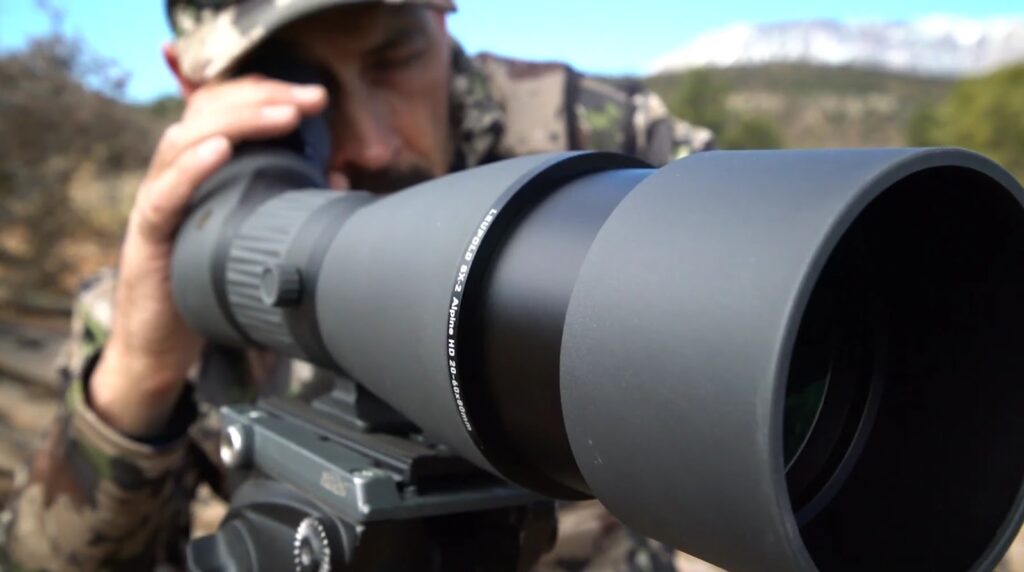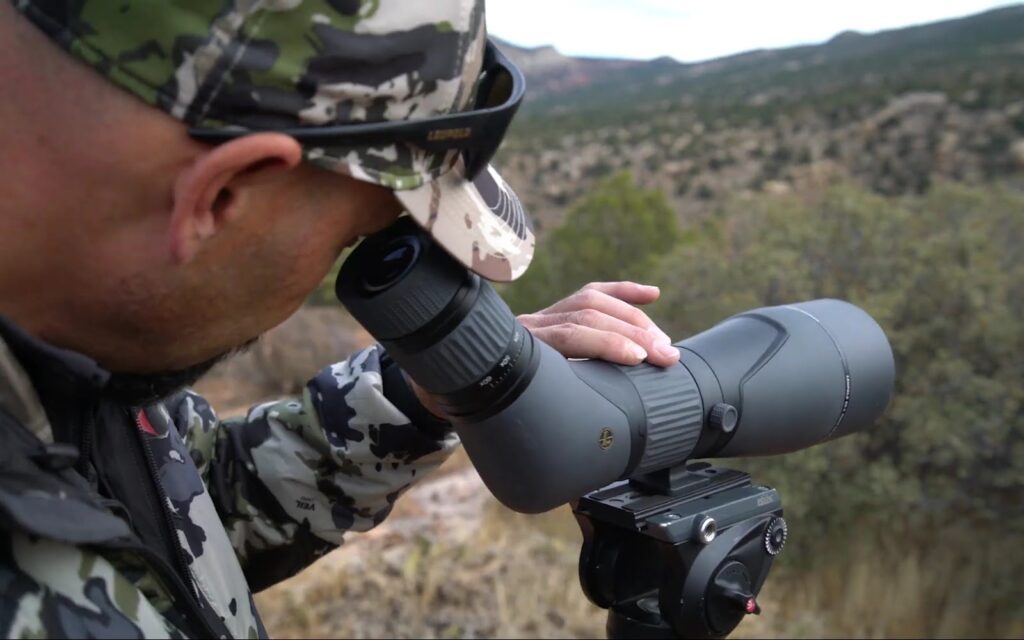Selecting an affordable spotting scope for travel involves balancing quality, cost, and portability. This guide provides practical advice on finding the best spotting scopes under $100, guaranteeing that everybody can enjoy a rewarding viewing experience without straining their budget. Whether you’re exploring distant landscapes or observing wildlife, the right scope can improve your travel adventures efficiently and effectively.
Analyzing the Intended Use of a Spotting Scope
When in the market for a spotting scope, it’s imperative to clearly define its primary function. The nature of the activities you plan to use it for—whether observing birds in their natural habitat, watching wildlife, appreciating panoramic views, or engaging in precision activities like target shooting—shapes the specifications you’ll need to prioritize. Key features to consider include:
- Magnification Power: Higher magnification allows closer views but can be more sensitive to hand movements;
- Objective Lens Diameter: A larger lens captures more light, which is beneficial for low-light conditions but can increase the scope’s bulk;
- Durability: Robust construction ensures the scope withstands various environmental conditions, from rain to rough handling during hikes.
Understanding these aspects will aid in selecting a scope equipped with the right balance of features, ensuring it fulfills its intended purpose effectively.
Choosing the Right Size and Weight for Travel
For people who frequently travel, the portability of a spotting scope becomes a significant consideration. A scope that is too cumbersome can hinder mobility and detract from the overall experience, whereas one that is too light might sacrifice optical quality and durability. Here are some recommendations for selecting a travel-friendly spotting scope:
- Compact Design: Opt for models that strike an ideal balance between size and functionality, typically those with an objective lens diameter of 50mm or less, as they are easier to manage and store;
- Lightweight Materials: Scopes constructed with materials like carbon fiber or composite plastics offer durability without the added weight, making them ideal for long treks;
- Travel Optimized Features: Seek out scopes with features like retractable sunshades, waterproofing, and fog-proof construction, enhancing their usability in various travel conditions.
Magnification and Objective Lens Details for Budget Spotting Scopes
When selecting a spotting scope priced under $100, buyers will encounter a variety of magnification options, typically from 15x to 60x. High magnification levels are fantastic for observing distant objects in greater detail, enhancing both your birdwatching and landscape-viewing experiences. However, higher magnification also introduces challenges in maintaining a steady image, especially if the scope is used without a tripod. This is particularly important to consider for those who frequently travel or hike with their scopes.
Additionally, the size of the objective lens plays a pivotal role in image quality. A larger objective lens, often measured in millimeters, captures more light, which is crucial for clear viewing in dim conditions. Here are the benefits and considerations regarding objective lens size:
- Enhanced Brightness: Larger lenses improve visibility in low-light environments, such as at dusk or dawn;
- Improved Clarity: A broad lens diameter allows for a sharper, more detailed image;
- Increased Bulk: While beneficial for image quality, larger lenses add to the weight and size of the scope, potentially making it less convenient for on-the-go use.
Build Quality in Spotting Scopes
The longevity and resilience of a spotting scope are critical, especially for anybody who faces varying weather conditions and rugged terrains. Here are essential features to look for in the build quality of a budget spotting scope:

- Waterproofing: This is crucial for use in damp conditions and protects the internal components from moisture damage;
- Fog-proofing: A nitrogen or argon purged scope prevents internal fogging that can obscure the lens during sudden temperature changes;
- Rubber Armor: Provides enhanced grip for handling and shields the scope from impacts and abrasions.
Despite a modest budget, it is important not to compromise on these aspects of construction. Opting for a model that balances affordability with robust build quality will guarantee better performance and durability. Here are additional tips and insights:
- Check Reviews: User and expert reviews can offer valuable insights into the real-world performance and durability of the scope;
- Warranty Offerings: Look for products that offer warranties, as this can be an indicator of the manufacturer’s confidence in their build quality;
- Trial Handling: If possible, test the scope in person to assess its ergonomics and build. This can help determine if the weight and feel are suitable for your specific needs.
User-Friendly Design and Setup
When selecting a spotting scope for travel, priority should be given to its ease of set-up and adjustability. Key features to consider include:
- Smooth Focusing Mechanism: A scope that features a finely tuned focusing knob allows for rapid and precise adjustments, which is crucial for observing fast-moving wildlife or distant scenes;
- Robust Tripod Compatibility: Ensuring that the scope can be mounted on a stable platform is essential for clear viewing. While tripods can sometimes be more expensive than the scope itself, opting for a scope that either includes a compatible tripod or fits well with cost-effective yet sturdy models can offer significant savings and convenience.
Additional Considerations:
- Quick-release Plates: Some tripods come with quick-release plates that make attaching and detaching the scope swift and hassle-free, which is particularly handy during travel;
- Portability: Look for lightweight scopes with a compact design that makes them easy to carry and set up on the go.
Researching Reviews and Feedback
Reading insights from previous buyers can influence the decision-making process when choosing a spotting scope. Here are steps to effectively use reviews and recommendations:
- Check Multiple Sources: Explore reviews from various platforms like e-commerce sites, forums, and specialized outdoor gear review websites to get a well-rounded view of the product’s performance;
- Look for Common Themes: Pay attention to recurring comments about the scope’s durability, optical quality, and ease of use. These often highlight the strengths and weaknesses that might affect your satisfaction;
- Evaluate the Context: Consider the experiences of users who share similar interests and conditions under which you’ll use the scope. Reviews from fellow budget-conscious travelers or those who use scopes in similar environments can provide the most relevant insights.
For those on the lookout for the best deals, this list of the best spotting scope under $100 can offer a selection of models that strike a balance between cost and quality. These options have been carefully chosen to provide good functionality without compromising too much on the features that matter most to travelers.
Tips for Gleaning Useful Information:
- Verified Purchase Reviews: These are generally more reliable as they come from users who actually bought and used the product;
- Recent Reviews: Technology and product quality can change, so focusing on the latest reviews will give the most current information.
Warranty and After-Sales Support
When selecting a spotting scope, the warranty coverage and the quality of after-sales support provided by the manufacturer should be carefully analyzed. An extensive warranty not only safeguards your investment but also provides peace of mind, guaranteeing that any defects or issues that may arise are addressed promptly without additional cost. Look for warranties that cover a significant time period and check what specific components and problems are included.

Equally important is the manufacturer’s customer service reputation. Effective after-sales support can greatly improve your overall user experience. Responsive customer service is crucial, especially when you require immediate help with setup, troubleshooting, or any other inquiries. It’s advisable to choose companies known for their strong support teams that offer multiple channels of communication, such as phone, email, and live chat.
Key Considerations:
- Duration and Coverage: Opt for longer warranties that cover a broad range of issues;
- Customer Support: Evaluate the responsiveness and availability of the customer service team;
- Repair Services: Check if the manufacturer provides convenient and swift repair services.
Additional Features
Spotting scopes can come equipped with a variety of additional features that upgrade their functionality and adaptability to different environments and uses. When choosing a scope, consider the availability of features like smartphone adapters and variable zoom lenses. Smartphone adapters are particularly useful for birdwatchers who wish to capture high-quality images of their sightings directly through their scopes. On the other hand, scopes with variable zoom lenses offer versatility, allowing users to adjust the magnification to suit varying viewing distances, which is ideal for both short-range and long-distance observations.
While it’s true that more advanced features may be scarce in less expensive models, they can significantly upgrade your viewing experience if they align with your needs. Therefore, it is worth exploring scopes that offer these capabilities within your budget.
Features to Consider:
- Smartphone Adapters: Allow for easy photography and sharing of images;
- Variable Zoom Lenses: Provide flexibility in adjusting viewing magnification;
- Weather Resistance: Features like waterproofing and fog-proofing add value, especially in diverse outdoor conditions;
- Eyepiece Comfort: Consider scopes with adjustable or angled eyepieces for comfortable extended use.
Conclusion
Choosing a suitable spotting scope under $100 for your travels requires careful consideration of features, durability, and ease of use. By prioritizing these key aspects, you can secure a tool that not only fits your budget but also improves your viewing experiences on the go. Remember, the right scope will offer a balance of functionality and portability, making it an invaluable companion for any travel adventure.